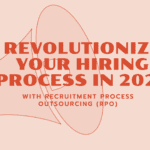Share article:
Introduction :
Flexible staffing offers an effective approach, allowing companies to manage their teams more efficiently and remain cost-competitive.
In this blog, we’ll dive into the concept of flexible staffing, explore its benefits, and clear up misconceptions. Additionally, we’ll discuss strategies for implementing this approach across industries.
Table of Contents:
Popular Posts
-

 One-Time Placement (OTP): A Modern Approach to Recruitment, Employment, and Staffing23 Feb 2024
One-Time Placement (OTP): A Modern Approach to Recruitment, Employment, and Staffing23 Feb 2024 -

 Insights on Diversity & Inclusion in Workplaces and Best Practices09 Mar 2023
Insights on Diversity & Inclusion in Workplaces and Best Practices09 Mar 2023 -

 Building a Strong Employer Brand in the Digital Age09 Mar 2023
Building a Strong Employer Brand in the Digital Age09 Mar 2023 -


 Flexible Staffing: Key to Agile and Cost-Effective Workforce Solution17 Sep 2024
Flexible Staffing: Key to Agile and Cost-Effective Workforce Solution17 Sep 2024 -

 Strategies to Excel in the Virtual Job Market in India21 Nov 2023
Strategies to Excel in the Virtual Job Market in India21 Nov 2023
Introduction to Flexible Staffing
Flexible staffing is a strategy that enables businesses to hire on a temporary, part-time, or contract basis to meet specific requirements. Unlike traditional models that focus on long-term or full-time hires, this method provides a way to adjust your workforce quickly to address short-term needs.
- Definition and Overview of Flexible Staffing This strategy revolves around adjusting your team based on immediate demands. It helps businesses maintain efficiency while managing costs, eliminating the need for permanent hires.
- Evolution of Workforce Management Traditional workforce models, which emphasize full-time employment, are increasingly challenged by rapid technological advances, seasonal demands, and economic fluctuations. As a result, many organizations are turning to more dynamic staffing methods to stay agile.
Benefits of a Flexible Workforce
Implementing a flexible workforce offers numerous advantages, making it an appealing option for many businesses:
1. Cost Efficiency
2. Workforce Agility
Flexible staffing enables businesses to scale up or down depending on the current workload, helping avoid overstaffing during slower periods.
3. Access to Expertise
When projects require specialized skills, a flexible workforce allows businesses to bring in professionals for specific tasks, delivering high-quality results without permanent commitments.
4. Faster Hiring Process
Agencies managing flexible hires often maintain a pool of pre-qualified candidates, speeding up the hiring process and allowing businesses to respond to changing needs quickly.
5. Reduced Hiring Risk
Hiring workers on a temporary or contract basis enables businesses to evaluate their performance before committing to a long-term relationship, reducing the risk of poor hires.
Core Components of a Flexible Staffing Model
To effectively manage a dynamic workforce, certain components are essential:
1. Strategic Workforce Planning
2. Recruitment and Talent Sourcing
3. Onboarding and Integration
Proper onboarding is essential, even for temporary workers, to ensure alignment with company goals and culture.
4. Ongoing Evaluation
Regular feedback and evaluation of flexible workers are important for ensuring they meet business objectives and contribute effectively.
Industry-Specific Applications
Flexible staffing is adaptable across various sectors, each benefiting uniquely from this approach:
1. Retail Sector
In industries like retail, flexible staffing allows companies to adjust their workforce during peak seasons, helping manage labor costs and maintain high service standards.
2. Technology Sector
For tech companies dealing with project-based demands, this approach ensures they have access to developers, engineers, and specialists as needed.
3. Manufacturing Sector
In manufacturing, companies can easily scale their workforce in line with production demands, avoiding unnecessary costs when workloads decrease.
Assessing Success in Dynamic Staffing
To measure the effectiveness of your dynamic staffing strategies, key metrics to track include:
- Time-to-fill: The speed at which positions are filled with temporary staff.
- Cost-per-hire: Total expenses incurred in hiring short-term workers.
- Quality of hire: How well the temporary staff perform and contribute to business outcomes.
- Retention rates: The number of temporary workers who transition into long-term roles or are rehired for future projects.
Common Myths
Myth 1: Flexible Hiring is Only for Low-Skilled Jobs
This approach applies to all levels, including highly specialized or executive roles.Myth 2: Temporary Staff Deliver Inconsistent Quality
With proper screening, temporary staff can provide high-quality work, often bringing fresh perspectives to the business.Myth 3: It’s More Expensive than Traditional Hiring
While the initial cost may seem high, flexible hiring reduces long-term expenses, such as benefits, training, and management of full-time staff.
HiringHut’s Flexible Staffing Solutions
At HiringHut, we offer comprehensive solutions designed to meet your dynamic staffing needs. Our services provide access to a diverse pool of qualified candidates, streamline the hiring process, and enhance overall business efficiency.
Summary :
In today’s fast-paced business environment, embracing a flexible workforce approach allows companies to stay competitive, manage costs, and ensure they have the right talent at the right time. By adopting this strategy, businesses can optimize their workforce management, driving efficiency and success.
For more insights or to explore our staffing solutions, contact HiringHut today.
FAQ's :
What is the main difference between traditional hiring and flexible staffing?
Traditional hiring focuses on long-term or full-time positions, while flexible staffing is designed for short-term or project-based needs.Can flexible staffing lead to permanent positions?
Yes, it is often used as a trial period to assess a candidate’s fit before offering a permanent role.Which industries benefit the most from flexible staffing?
Sectors like retail, technology, and manufacturing find flexible staffing particularly useful in managing fluctuating workforce demands.





